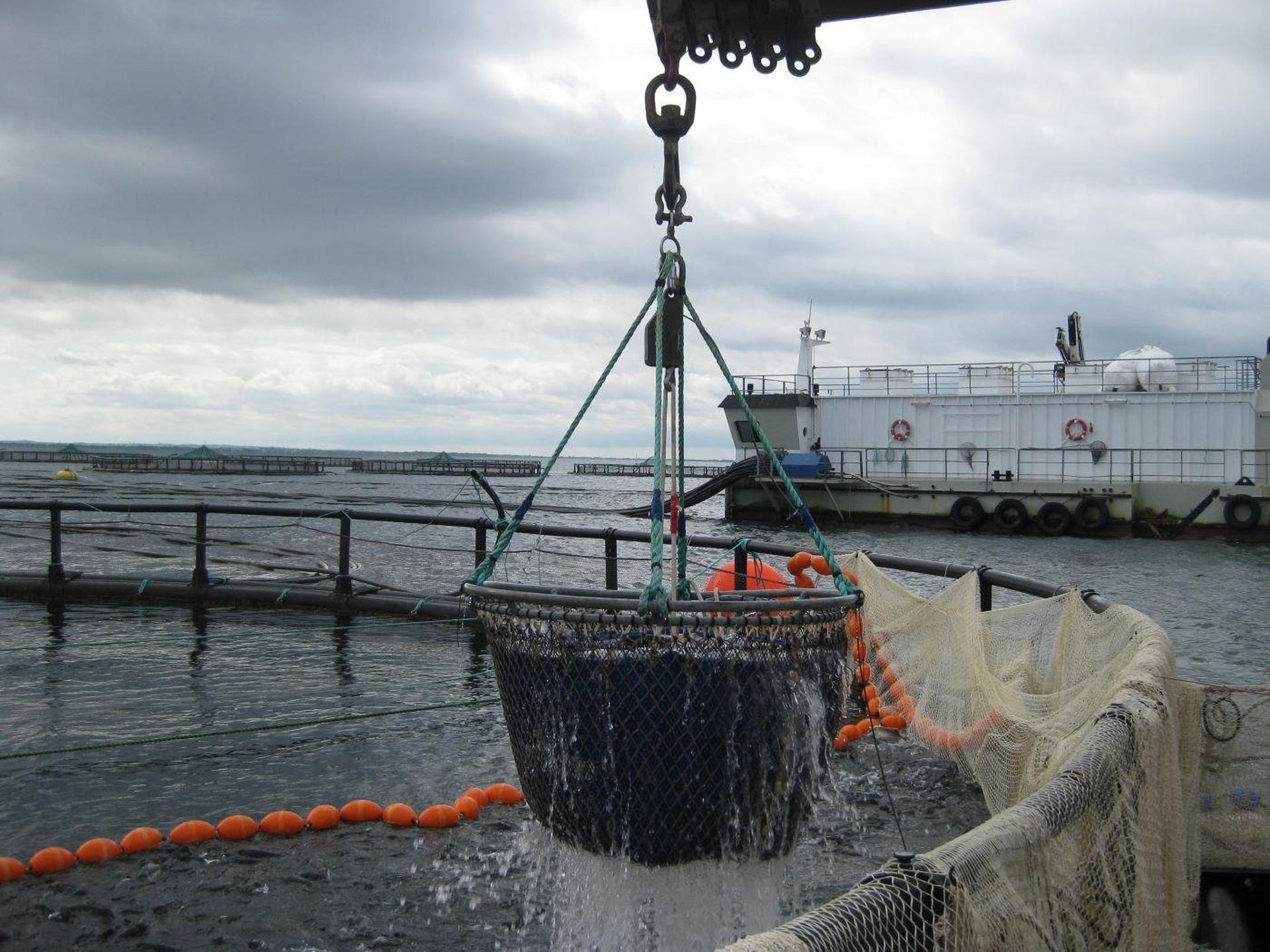Results of the Hav-Tek project, supported by GUDP, indicate that BioMar's high-tech feed with a reduced phosphorus content, developed under the feed concept Blue Impact, meets the expectation of low phosphorus emissions, thus contributing to sustainable development within aquaculture.
The green transition of trout farming in sea cages is well underway with BioMar’s feed concept Blue Impact, which takes into account the environmental impact of aquaculture feed on our planet.

In the period 2019-2022, the purpose of the GUDP* Project ‘Hav-Tek’, headed by DTU Aqua, was to strengthen environmental-technical solutions for improved trout farming in sea cages. Together with Dansk Akvakultur, AquaPri, DTU Aqua and DTU-Mek, BioMar is a project partner. A focus area of the Hav-Tek project was to investigate how to reduce the level of phosphorus contained in fish feed. The test feed was tested at a sea farm to document, if possible, improved environmental and production conditions.
The project has now been completed, and it became evident during the presentation of its results in January 2023 that the feed utilised in the trial, Blue Impact Aqua from BioMar, which contains a reduced amount of phosphorus, meets the expectation of low phosphorus emissions.
Thanks to BioMar’s globally established know-how within research and development in aquaculture feed, the feed concept Blue Impact was introduced in 2020. At the same time, the feed range Blue IMPACTTM Aqua was launched, the first feed series developed according to this concept, developed in collaboration with our customers. Its purpose is to reduce the total phosphorus content of the feed by making the phosphorous more available to the fish. At the same time, the aim of Blue IMPACTTM Aqua is to increase fish production on a specific phosphorus discharge target.
When developing Blue Impact Aqua, BioMar applied its know-how on phytic acid, which is an organic acid, and the enzyme named phytase. When bound to a mineral, phytic acid is called phytate. Phytates are stored in plants, e.g. in all kinds of grain. About 2/3 to 4/5 of the phosphorus content in grain are phytic acid compounds. The phytic acid content in feed not only affects the availability of the phosphorus bound in the plant raw materials, but also the digestion of macro- and microminerals. Phytic acid is therefore interesting in terms of physiology of nutrition. But just like humans, fish cannot absorb phytic acid into their bodies - it is excreted as insoluble calcium salt, and part of the valuable phosphorus and other minerals contained in the feed therefore disappears with the faeces without having contributed to cover the nutritional requirements of the fish. To meet the need of the fish for phosphorus, inorganic phosphorus has traditionally been added to the feed. Inorganic phosphorus is primarily found as a phosphate in various minerals and is mined in phosphate-rich mountains.
Phytase is an enzyme that catalyses the removal of phosphate from phytic acid or phytate. If phytase is added to the feed, the ability of the fish to digest and absorb phosphorus from vegetable raw materials may improve. Fish need to absorb a certain amount of phosphorus to meet their nutritional needs for natural growth, sexual maturation and development of eggs. The increased absorption of phosphorus and minerals from plant-based raw materials obtained by adding phytase means that the nutritional needs of the fish for phosphorous can be met by adding less inorganic phosphorus to the feed.
Blue Impact feed can reduce the amount of undigested feed excreted to the marine environment. In top, there will be less need to use the limited resources of phosphorus.
BioMar continuously follows up on customers’ experience regarding the feed containing less phosphorus. The content of phosphorus in Blue Impact Aqua is 0.6 %. Customer feedback indicates that the feed results in excellent growth, excellent roe production, excellent pigmentation of the fillet and excellent meat texture.
By ensuring increased digestibility of phosphorus, reduced phosphorus release and increased fish production, Blue IMPACT™ Aqua supports aquaculture by improving the efficiency of phosphorus consumption and therefore protecting the resources of our planet.
The green transition of trout farming in sea cages is well underway.
For further information on the feed with reduced phosphorous content utilised in the Hav-Tek project, we invite you to read the scientific article “Reducing phosphorus emissions from net cage fish farming by diet manipulation”, by Johanne Dalsgaard (DTU Aqua,) Per Bovbjerg Pedersen (DTU Aqua), Kim Schön Ekmann (BioMar and DTU Aqua) and Mikkel Detz Jensen (BioMar). Find the article here.
*The ‘Hav-Tek’ project has received grants from the Green Development and Demonstration Programme (GUDP) under the Ministry of Environment and Food of Denmark.
Read the full story and read more about BioMar's sustainability initiatives in our 2023 Sustainability Report.

